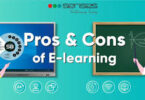EdTech Trends Revolutionizing Learning in 2024
Education technology, or EdTech, continues to reshape the landscape of learning as we move into 2024. With the rapid growth of digital tools, platforms, and innovations, educators and students alike are benefiting from more personalized, efficient, and engaging ways to teach and learn. From immersive learning experiences powered by artificial intelligence to the expansion of virtual classrooms, EdTech trends are providing solutions to long-standing challenges in education. In this article, we explore the key EdTech trends revolutionizing learning in 2024 and how they are changing the way we approach education.
1. Artificial Intelligence (AI) in Education
Artificial intelligence (AI) is one of the most transformative technologies in education today. AI has the potential to personalize learning, automate administrative tasks, and provide deeper insights into student performance. As we move into 2024, AI is becoming more integrated into the classroom, making education more adaptive and accessible.
How AI Is Shaping Education:
- Personalized Learning: AI algorithms can analyze student performance and adjust learning materials to suit each individual’s pace and needs. This allows for a customized learning experience that was previously unattainable with traditional methods.
- AI-Powered Tutoring: AI tutors are capable of providing personalized help outside school hours, offering immediate feedback and practice problems tailored to the student’s skill level.
- Automated Grading: AI is now able to automate grading for multiple-choice tests, essays, and assignments, significantly reducing the burden on teachers and giving them more time to focus on instruction.
The use of AI in education has the potential to greatly enhance student outcomes, streamline administrative tasks, and provide educators with valuable insights into student progress.
2. Virtual and Augmented Reality (VR/AR)
Virtual and Augmented Reality (VR/AR) technologies are revolutionizing the classroom experience by creating immersive, interactive learning environments. These technologies allow students to explore concepts in ways that were previously impossible, offering experiential learning that enhances understanding and retention.
Applications of VR and AR in Education:
- Immersive Learning Experiences: VR allows students to explore distant places, historical events, or complex scientific phenomena by immersing them in realistic, 3D simulations. For example, students can “visit” ancient civilizations or explore the human body in detail.
- Virtual Field Trips: With VR, students can take virtual field trips to locations around the world, enhancing their cultural awareness and expanding their global perspective.
- Interactive Learning with AR: AR enhances the physical world with digital elements. Students can use AR to visualize complex subjects such as mathematics or physics by interacting with 3D models in real-time.
The integration of VR/AR technology in education offers students engaging, hands-on learning experiences that promote active participation and deeper understanding.
3. Hybrid Learning Environments
The pandemic accelerated the adoption of hybrid learning models, which combine in-person and online learning. In 2024, hybrid learning continues to thrive, offering flexibility and inclusivity for students across the globe.
Features of Hybrid Learning:
- Flexible Learning Options: Hybrid learning allows students to access content and lessons online, while still participating in in-person activities and discussions. This flexibility is ideal for students with different learning styles and schedules.
- Blended Classroom Models: Teachers can combine digital tools with traditional methods, such as using online assessments or collaborative projects in conjunction with face-to-face lectures.
- Global Access to Education: Hybrid learning enables students from different geographic locations to access high-quality education without the barriers of distance or time constraints.
Hybrid learning provides greater flexibility and accessibility, making it an appealing choice for both students and educators in 2024.
4. Learning Management Systems (LMS) and Cloud-Based Platforms
Learning Management Systems (LMS) and cloud-based platforms have become essential tools for managing and delivering educational content. These platforms allow educators to centralize resources, track student progress, and collaborate with students and other teachers.
Benefits of LMS and Cloud-Based Platforms:
- Centralized Learning Hub: LMS platforms, such as Google Classroom or Moodle, serve as a central hub for assignments, grades, announcements, and communication between students and teachers.
- Collaborative Learning: Cloud-based tools like Google Docs and Microsoft Teams foster collaboration between students and allow for real-time document sharing, feedback, and group work.
- Scalability and Accessibility: Cloud-based platforms make it easy for schools and universities to scale their educational offerings and provide remote access to learning materials from anywhere.
As more educational institutions adopt LMS and cloud-based platforms, these tools are enhancing communication, collaboration, and data management in the classroom.
5. Gamification and Game-Based Learning
Gamification is the process of integrating game elements into educational content, while game-based learning uses actual games to teach concepts. Both trends are rapidly gaining traction in 2024 as they motivate students, encourage engagement, and improve retention.
How Gamification and Game-Based Learning Work:
- Points, Badges, and Leaderboards: Gamification incorporates elements like points, badges, and leaderboards to motivate students and track their progress. By turning learning into a game, students become more engaged and excited about achieving educational milestones.
- Simulations and Educational Games: Game-based learning includes interactive games or simulations where students practice skills and solve problems in a fun, competitive environment. For example, math puzzles or history-based video games help students learn while having fun.
- Instant Feedback and Rewards: Both gamification and game-based learning provide instant feedback and rewards, which help keep students motivated and aware of their progress.
Gamification and game-based learning encourage student engagement, improve learning outcomes, and make education more enjoyable.
6. Artificial Reality (AR) for Skill Development
Augmented Reality (AR) is being used in 2024 to help students develop practical skills. AR overlays digital content onto the real world, allowing learners to practice and hone skills in a more interactive and immersive way.
Skill Development with AR:
- Hands-On Learning: AR can be used to simulate real-life scenarios, such as medical procedures, engineering tasks, or artistic designs. Students can practice skills in a safe, controlled virtual environment before applying them in real-world settings.
- Interactive Tutorials: AR-based tutorials help students visualize and interact with instructional content, making it easier to grasp complex concepts and processes.
- Remote Skill Training: AR allows students to engage in skill-building exercises from anywhere, making it an ideal tool for remote training and education.
AR’s ability to blend real-world experiences with digital instruction makes it an invaluable tool for practical skill development.
7. Blockchain for Education Credentials
Blockchain technology is making its way into education in 2024, particularly in the management of academic credentials. By using secure, decentralized ledgers, blockchain ensures that students’ educational records are tamper-proof, easily accessible, and transferable.
Blockchain Applications in Education:
- Digital Diplomas and Certificates: Blockchain allows educational institutions to issue digital diplomas and certificates that can be verified instantly, reducing the risk of fraud.
- Credential Verification: Employers and other institutions can easily verify academic credentials through blockchain, streamlining the hiring or application process.
- Student Data Privacy: Blockchain provides a secure way for students to control and manage their academic records while ensuring their privacy.
Blockchain technology has the potential to enhance the integrity of educational credentials, making the verification process more efficient and secure.
8. 5G Connectivity in Education
The rollout of 5G networks is expected to have a significant impact on EdTech in 2024. With faster internet speeds and lower latency, 5G connectivity enables more advanced digital learning experiences and improves access to online resources.
The Impact of 5G on Education:
- Enhanced Virtual Learning: 5G supports high-quality video streaming, virtual classrooms, and real-time communication, providing a more immersive learning experience.
- Instant Access to Resources: With 5G, students and educators can access large files, online textbooks, and interactive content without buffering delays.
- Global Collaboration: 5G facilitates real-time collaboration across borders, allowing students from different parts of the world to connect and work together.
5G technology will enable faster, more efficient digital learning experiences, enhancing both remote and in-person education.
Final Thoughts
As we move into 2024, the EdTech trends shaping the educational landscape are revolutionizing the way students learn and teachers teach. From AI-powered personalized learning to immersive VR experiences, these innovations are making education more engaging, accessible, and efficient. While there are challenges ahead, particularly regarding privacy, equity, and access, the potential of these technologies to transform education is undeniable. By embracing these trends, educational institutions can better prepare students for the future and enhance the learning experience for all.










Leave a Comment